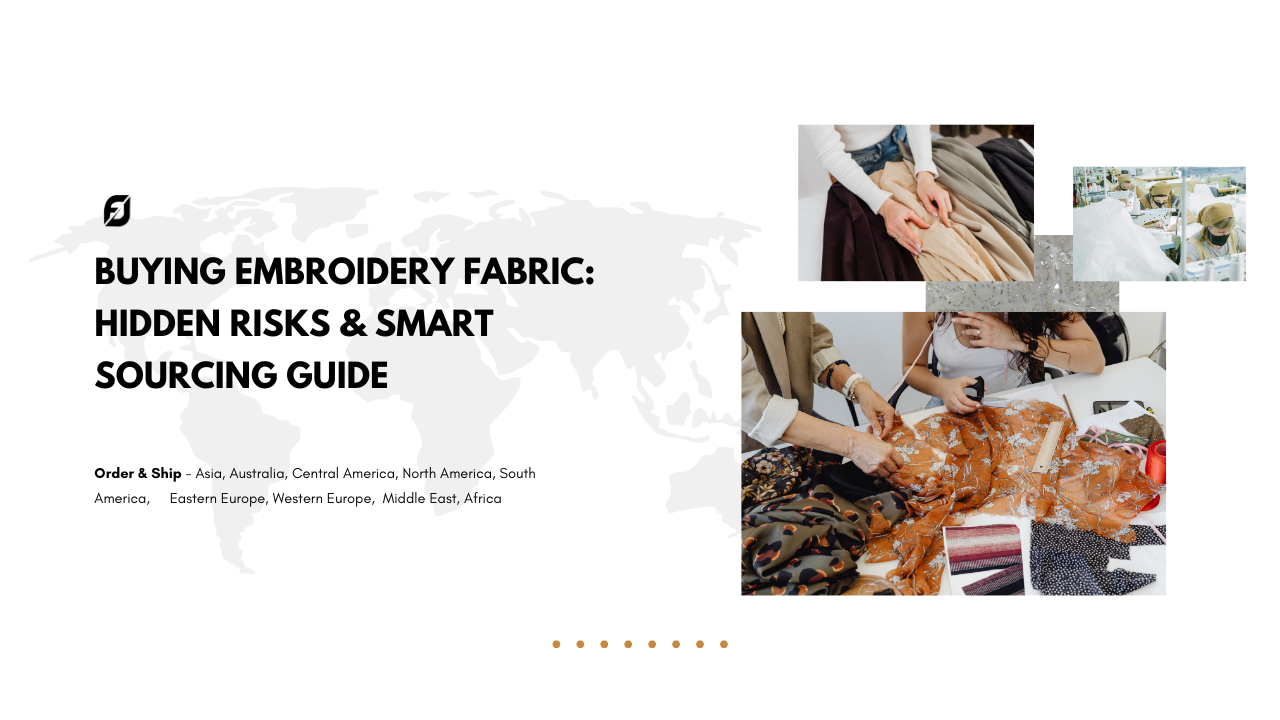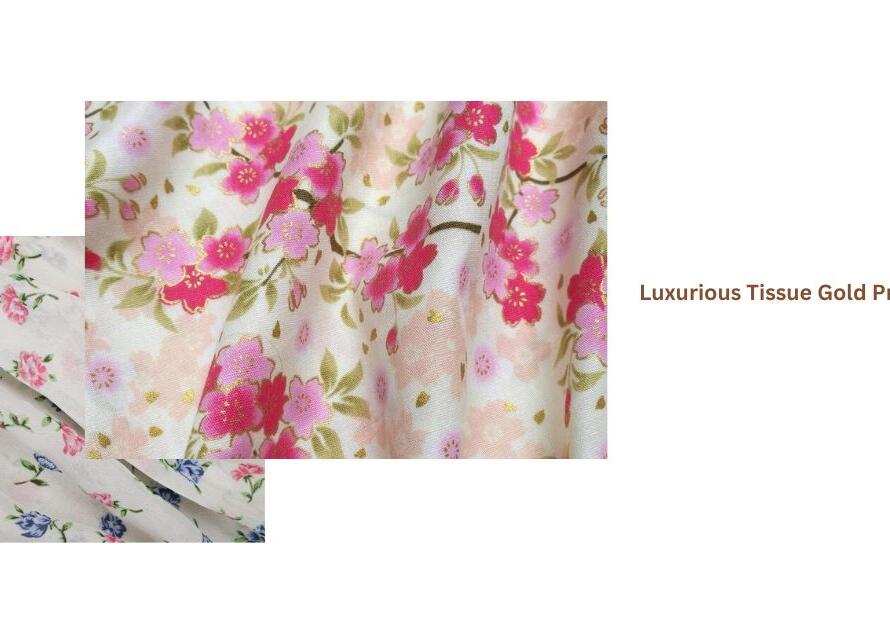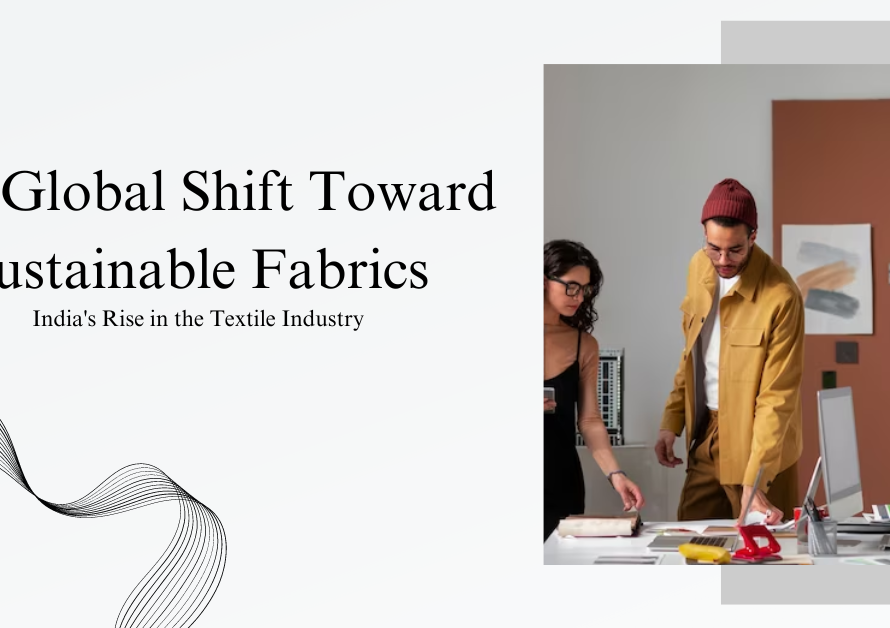Linen Satin fabric is a luxurious blend that combines the natural texture of linen with the smooth sheen of satin, creating a fabric that offers both comfort and elegance.
Its unique characteristics make it a popular choice for high-end garments that require both structure and sophistication.
Linen Satin Embroidery Fabric: Luxurious, Versatile & Dyeable
What is Linen Satin Fabric?
Linen Satin is a fabric made by weaving linen fibers with a satin weave. This gives the material a shiny, smooth surface, unlike the coarse feel of regular linen. It is soft to the touch and has a lustrous finish, making it ideal for creating garments with a refined look.
Types of Garments Made from Linen Satin
Linen Satin fabric is versatile and used for creating a variety of garments such as:
- Formal Dresses: Its sheen makes it perfect for evening gowns and cocktail dresses.
- Sarees and Blouses: The fabric’s drape and texture offer a sophisticated look in ethnic wear.
- Suits and Jackets: Its durability and smoothness work well for structured garments like jackets and suits.
Can Embroidery Be Done on Linen Satin?
Yes, Linen Satin fabric is excellent for embroidery work. The smooth surface allows detailed and intricate designs to be showcased beautifully. Here are some of the best types of embroidery suited for Linen Satin:
- Allover Embroidery: Covers the fabric with continuous patterns, making it ideal for sarees or heavy garments.
- Mirror Work: Adds shine and dimension to the fabric, making it stand out for ethnic wear.
- Kali and Daman Embroidery: Common in ethnic kurtis and lehengas, these styles offer traditional elegance.
- Butta and Zari Work: Popular in bridal and formal wear, these styles add rich textures.
- Beads with Sequins: Perfect for party wear, offering a shimmering, festive look.
- Sequins Work: Ideal for creating a glamorous and eye-catching design.
Is Linen Satin Dyeable?
Yes, Linen Satin is dyeable. It absorbs color well, allowing for vibrant hues. When comparing colored fabric to digital print fabric, the difference lies in the texture and finish. Colored fabric has a uniform look, while digital prints can create intricate patterns, adding to the fabric’s uniqueness.
Countries Where Linen Satin Garments Are Popular
Linen Satin garments are admired worldwide, particularly in:
- India: For ethnic wear like sarees, lehengas, and salwar suits.
- Middle Eastern Countries: Due to the fabric’s luxurious feel and suitability for formal attire.
- European Countries: Especially in formal dresses, suits, and summer outfits.
- United States: Used for evening gowns and bridal wear, given its smooth texture.
Madhav Fashion’s Linen Satin Embroidery Fabric
Madhav Fashion is renowned for producing high-quality Linen Satin Embroidery fabric. Their fabric is meticulously crafted, combining traditional and modern embroidery techniques, making them the biggest embroidery fabric manufacturer in Asia. Their wide range of designs and customization facilities allow them to cater to diverse markets worldwide.
Why Choose Madhav Fashion?
Madhav Fashion is known for:
- Quality and Craftsmanship: Their embroidery work is detailed and precise, with attention to every design element.
- Customization: They offer custom embroidery designs to meet the specific needs of fashion designers, garment manufacturers, and wholesalers.
- International Reach: Their fabric is exported globally, making them a trusted name for embroidered fabric in both domestic and international markets.
This blend of tradition and innovation has made Madhav Fashion a leader in the industry, trusted by brands and designers worldwide for high-quality Linen Satin Embroidery fabric.
____________________________________________
What is Linen Satin Fabric, and how is it different from regular Linen?
Linen Satin fabric is a luxurious blend that combines the natural fibers of linen with the sheen of satin, creating a fabric that is both soft and lustrous. Regular linen is known for its coarse texture and durability, but it lacks the smooth finish and elegance of satin. By weaving linen fibers using a satin technique, Linen Satin fabric gains a smoother surface and a slight shine that elevates its appearance.
This blend offers the best of both worlds: the breathability and natural look of linen, along with the refined, polished finish of satin. Linen Satin fabric is commonly used for high-end garments like sarees, formal dresses, and even jackets. Its versatile texture allows it to be used in both ethnic and Western outfits, making it a preferred choice for designers looking to create sophisticated yet comfortable garments. Additionally, unlike traditional linen, which can wrinkle easily, Linen Satin offers better wrinkle resistance, adding to its appeal.
What types of garments are commonly made from Linen Satin fabric?
Linen Satin fabric is highly versatile and used in creating a wide variety of garments. Some of the most popular garments include:
- Sarees and Blouses: The smooth, shiny surface of Linen Satin makes it a favored choice for sarees, giving them a rich and elegant drape. Blouses made from this fabric also provide a refined, polished look.
- Formal Dresses: The sheen of the fabric makes it perfect for gowns and evening dresses, adding a luxurious feel to formal wear.
- Suits and Jackets: Linen Satin’s durability and structure make it suitable for creating sharp suits and stylish jackets that maintain their shape while offering comfort.
- Bridal Wear: The fabric’s lustrous quality makes it ideal for bridal outfits, where rich textures and shine are valued.
- Kurta Sets and Ethnic Wear: Linen Satin is also popular in ethnic garments like kurtas and lehengas, often combined with embroidery for an added touch of elegance.
This fabric’s versatility across different garment types ensures its place in both casual and formal wardrobes.
Can embroidery be done on Linen Satin fabric, and which types of embroidery are best suited?
Yes, embroidery can be done on Linen Satin fabric, and its smooth surface makes it an ideal canvas for intricate and detailed embroidery work. The best-suited embroidery techniques for this fabric include:
- Allover Embroidery: This style covers the entire fabric, adding texture and detail, perfect for sarees and heavily embroidered garments.
- Mirror Work: Adds sparkle and shine, enhancing the satin’s sheen, often used in ethnic wear like lehengas and kurtis.
- Kali and Daman Embroidery: These traditional styles work well for garments like kurtas and lehengas, providing structure and detail.
- Butta and Zari Work: Popular in bridal and festive wear, these techniques give a regal and luxurious feel to the fabric.
- Sequins and Beadwork: Ideal for party wear, this embroidery adds a glamorous touch, enhancing the sheen of the fabric. The combination of Linen Satin’s luster with detailed embroidery creates stunning, high-end garments suitable for various occasions.
Is Linen Satin fabric dyeable, and what is the difference between dyed fabric and digital prints on Linen Satin?
Yes, Linen Satin fabric is dyeable. The fabric absorbs dyes well, allowing for rich, vibrant colors that retain the sheen of satin. Dyeing Linen Satin can be done in solid colors or ombre shades, depending on the design preference. The difference between dyed fabric and digital prints lies in the finish and appearance:
- Dyed Fabric: Offers a uniform, solid look with consistent color throughout the material. Dyed Linen Satin maintains a smooth, polished finish, making it suitable for formal wear.
- Digital Print: Digital printing on Linen Satin allows for intricate, complex patterns to be printed onto the fabric. This technique enables the creation of unique designs that can’t be achieved through dyeing alone. Digital prints can include floral patterns, abstract designs, or geometric shapes, adding a modern touch to the fabric.
Both dyed and digitally printed Linen Satin fabrics are popular in the fashion industry, offering flexibility in design choices.
Which countries favor garments made from Linen Satin fabric?
Linen Satin fabric enjoys popularity across various countries, thanks to its blend of comfort and luxury. In India, it is widely used in ethnic garments like sarees, lehengas, and kurtas. The fabric’s sheen and smooth texture make it a favorite for festive and wedding wear. Middle Eastern countries also favor Linen Satin for traditional attire like abayas and kaftans, where the fabric’s drape and elegance shine.
In Europe, Linen Satin is often used in formal dresses, bridal gowns, and summer outfits due to its lightweight yet luxurious feel. United States markets Linen Satin primarily for evening gowns, bridal wear, and high-end fashion, where the fabric’s smooth finish adds to the overall aesthetic.
Countries with warmer climates prefer Linen Satin because it provides breathability with a polished finish, making it suitable for both casual and formal wear. Its global popularity ensures its place in various fashion styles, from ethnic to contemporary designs.
What makes Madhav Fashion’s Linen Satin Embroidery fabric stand out in the market?
Madhav Fashion is one of the leading manufacturers of Linen Satin Embroidery fabric, known for its high-quality craftsmanship and innovative designs. Their fabric stands out due to several factors:
- Superior Craftsmanship: Madhav Fashion pays attention to every detail, ensuring that each piece of embroidery on the Linen Satin fabric is meticulously done. Their skilled artisans create intricate patterns that elevate the overall look of the fabric.
- Customization Options: Madhav Fashion offers customization facilities, allowing designers and manufacturers to choose specific embroidery designs, colors, and finishes tailored to their needs.
- International Standards: Madhav Fashion adheres to global quality standards, making their fabric suitable for international markets. They export to various countries, ensuring that their fabric meets the diverse needs of designers and manufacturers worldwide.
Their Linen Satin Embroidery fabric combines traditional embroidery techniques with modern aesthetics, making it a preferred choice for high-end fashion houses and garment manufacturers globally.
Why is Madhav Fashion considered the biggest embroidery fabric manufacturer in Asia?
Madhav Fashion has earned its reputation as the biggest embroidery fabric manufacturer in Asia due to its commitment to quality, innovation, and scale of production. They offer:
- Wide Range of Products: Madhav Fashion provides a diverse selection of fabrics, including Linen Satin, Georgette, Silk, and more, with intricate embroidery options like Zari work, sequins, and digital prints.
- State-of-the-Art Technology: Their use of advanced machinery and skilled artisans ensures precise, high-quality embroidery that meets international standards.
- Global Clientele: Madhav Fashion exports its fabric to several countries, catering to a wide range of markets, including the fashion hubs of Europe, the Middle East, and the United States.
- Customization and Innovation: They offer custom designs and continuously innovate to keep up with global fashion trends, making them a trusted partner for designers and manufacturers.
This combination of quality, scale, and innovation has solidified Madhav Fashion’s position as a leader in the embroidery fabric industry.
What types of embroidery patterns are available on Linen Satin fabric at Madhav Fashion?
Madhav Fashion offers a wide variety of embroidery patterns on Linen Satin fabric, making it suitable for different garment types and occasions. Some of the popular patterns include:
- Allover Embroidery: This style covers the entire fabric with intricate designs, perfect for sarees and heavy dresses.
- Mirror Work Embroidery: Adds reflective elements to the fabric, enhancing the shine of the satin.
- Zari Work: Gold or silver thread is used to create luxurious patterns, often seen in bridal wear.
- Kali and Daman Embroidery: Traditional designs that are popular in ethnic wear like kurtas and lehengas.
- Butta Embroidery: Small motifs scattered across the fabric, adding elegance without overwhelming the design.
- Sequins and Beads Work: Perfect for creating party wear or festive garments with a glamorous look.
These diverse embroidery patterns ensure that designers can find the right fit for their creations, whether they are designing ethnic wear, bridal outfits, or high-end fashion.
What customization options does Madhav Fashion offer for Linen Satin Embroidery fabric?
Madhav Fashion offers a wide range of customization options for Linen Satin Embroidery fabric to meet the unique needs of their clients. Some of the key customization features include:
- Embroidery Design: Clients can choose from a vast array of embroidery patterns or request custom designs tailored to their specific requirements.
- Color and Dyeing Options: Linen Satin fabric can be dyed in various shades, allowing for a wide selection of color options. Madhav Fashion also offers ombre dyeing and digital print options.
- Fabric Width and Embroidery Coverage: Clients can specify the fabric width and the extent of embroidery coverage, whether they want allover embroidery, borders, or specific motifs.
- Embroidery Type: Madhav Fashion provides different types of embroidery, including Zari work, sequins, mirror work, and more, depending on the desired look of the final garment.
- MOQ (Minimum Order Quantity): Madhav Fashion caters to both small and large-scale orders, making it easy for designers, boutiques, and manufacturers to get exactly what they need.
This flexibility in customization allows Madhav Fashion to serve a wide range of clients, from high-end fashion designers to bulk fabric wholesalers.
How does Linen Satin fabric compare to other satin fabrics in terms of comfort and durability?
Linen Satin fabric stands out for its unique blend of comfort and durability. Compared to traditional satin fabrics, which can sometimes feel heavy and non-breathable, Linen Satin offers better breathability thanks to its linen component. The natural fibers of linen allow for better air circulation, making it more comfortable to wear in warmer climates.
In terms of durability, Linen Satin holds up well against regular wear and tear. While traditional satin fabrics are prone to snagging or pilling, Linen Satin’s linen component gives it added strength, making it more resistant to damage. Additionally, it offers better wrinkle resistance than pure linen fabrics, providing a polished look without the need for constant ironing.
For those seeking a fabric that combines the elegance of satin with the durability and comfort of linen, Linen Satin is an excellent choice, suitable for both casual and formal garments.






